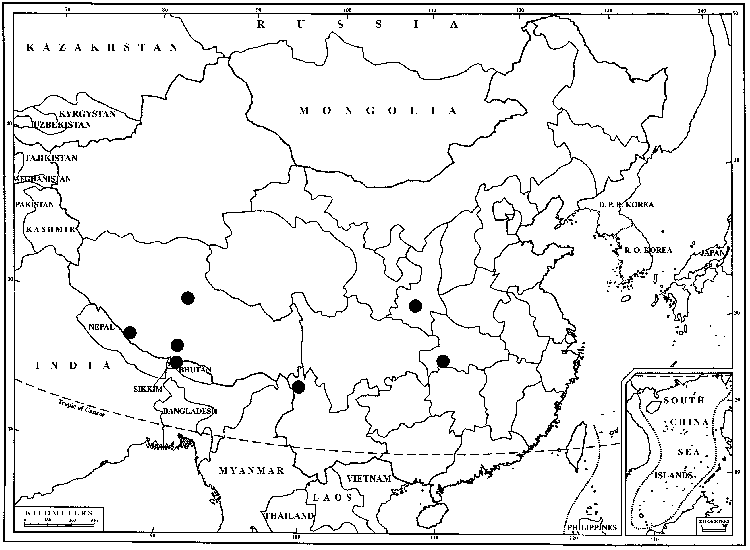Didymodon perobtusus
Rev. Bryol. 56: 1. 1928,.
Plants usually green, red or dark-brown. Stems to 0.6 cm, central strand present. Stem-leaves appressed-incurved when dry, weakly spreading and not keeled when moist, monomorphic, ovatelanceolate, broadly concave adaxially across leaf, usually 0.7–1.2 mm, base weakly differentiated in shape, ovate, margins weakly recurved at mid leaf, minutely crenulate, apex rounded-acute, often weakly cucullate; costa ending (2–) 4–6 cells below the apex, not strongly spurred, little tapering, without an adaxial pad of cells, adaxial costal cells quadrate or short to long-rectangular, 2 cells wide at mid leaf often grading to 4 proximally, guide cells in 1 layer; basal laminal cells differentiated medially, walls thin or thick, quadrate to rectangular, not perforated; distal laminal cells 9–11 wide, 1: 1, papillae absent visible or low, simple, 1 over each lumen, lumens subquadrate to irregular, walls evenly thickened, weakly convex on both sides of lamina, 1-stratose. Specialized asexual reproduction by mostly unicellular gemmae in leaf-axils. Sexual condition only perichaetial plants seen. Sporophytes unknown. Distal laminal KOH reaction red.
Habitat: Calcareous rock or soil, bluffs, often near waterfalls
Elevation: low to high elevations (100-3000 m)
Distribution

N.W.T., Yukon, e Asia
Discussion
Didymodon perobtusus is an extremely rare species known in the flora area from only two stations: Northwest Territories, Mackenzie District, Nahanni National Park, Virginia Falls, Scotter 22433 (NY); and Yukon, Firth River basin, near mouth of Mancha Creek, 68°40’N, 141°W, Sharp MC-58152a pro parte, 1958 (NY). It has several characters in common with D. revolutus of the southwestern United States and Mexico, including leaf and laminal papillae shape and unicellular gemmae borne in dense axillary clusters; however, D. revolutus differs by the strongly recurved to revolute margins, leaf cells with thin, light yellow walls, and gemmiferous plants uncommon, the propagula all unicellular. Both North American collections seen were from stations at which D. subandreaeoides is also present, growing in separate or occasionally confluent cushions. The taxonomic position of D. perobtusus is not clear. It is here placed near D. subandreaeoides because of dark, reddish color and similarity of areolation and laminal papillae. It may, however, turn out to be related to D. tophaceus, with which it has a certain resemblance.
Selected References
None.
Lower Taxa
"um" is not declared as a valid unit of measurement for this property."um" is not declared as a valid unit of measurement for this property.
